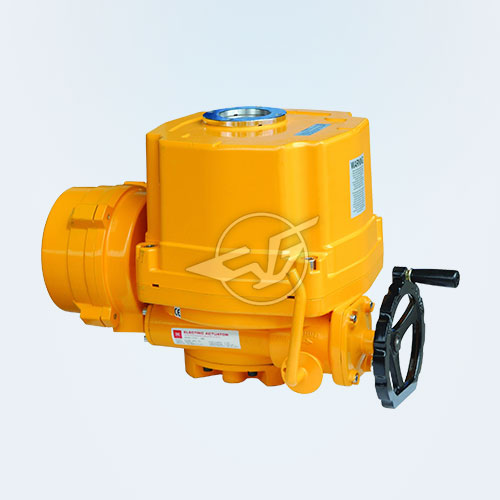Electric Actuator

multi-turn: the need to run more than 360 ° in order to achieve the open and close valves, shut-off valve is mainly used, pinch valve diaphragm valve and straight travel: the power output, the resulting displacement, mainly for gate valves and sluice valve
Electric Actuator (Electronic Actuator), also known as electric actuator. It is a kind of drive device which can provide linear or rotary motion. It uses electric energy to drive and work under the control signal, and it is applied to various industrial automation process control links.
1, the electric rotary actuator multi
one of many types of rotary actuator power-driven actuators are the most common and reliable. Use single-phase or three-phase motors to drive the gear or worm gear to finally drive the stem nut. The stem nut causes the stem to move to open or close the valve.
Multi-turn electric actuators can quickly drive large-size valves. In order to protect the valve from damage, the limit switch installed at the end of the valve stroke will cut off the power supply of the motor. At the same time, when the safety torque is exceeded, the torque sensing device will cut off the power of the motor. The position switch indicates the valve switch status, The handwheel mechanism with the clutches is installed to operate the valve manually in the event of a power failure.
The main advantage of this type of actuator is that all the components are housed in a single housing that integrates all the basic and advanced features in this water, dust and explosion proof enclosure. The main disadvantage is that when the power failure, the valve can remain in place, only the standby power system, in order to achieve fail-safe valve position (open or fail closed fault)
2, a single electric rotary actuator
that is similar to the actuator Electric multi-turn actuators, the main difference is that the final output of the actuator is 1/4 turn 90 degrees of movement. The new generation of electric single-rotary actuators combines the complex functions of most multi-turn actuators, such as: parameter setting and diagnostics using a non-invasive, user-friendly operator interface.
Compact rotary actuators can be fitted to small-size valves, usually with output torques up to 800 kg and small power requirements. They can be fitted with batteries for fail-safe operation.


 No.31011802002466
No.31011802002466

